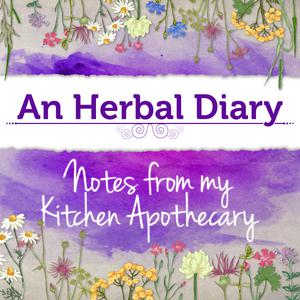
An Herbal Diary
Dina Ranade
- 46 minutes 11 secondsGetting to Know Sumac, An Underutilized Herb
What makes a fruit or vegetable easy to find in grocery stores? While there are many answers to this question, a lot of edible medicinal herbs are not, herbs like nettles, burdock root and elderberries. To this list, I am adding sumac berries. Sumac may not give us delicious fruit, but there is good reason to get to know it better and I am doing this in my kitchen. And in case you are wondering, this is a totally different plant than toxic poison sumac.
My favorite sources for dried sumac:
Join me in this episode for more on sumac…its uses as a culinary spice and as an underutilized medicinal herb and also the difference between sumac and poison sumac.
Sending you warm summer thoughts and thank you for joining me!
---Deepest gratitude to Andrea Klunder, my podcast boss. Find her at thecreativeimposter.com.
Original music by Dylan Rice
Please send me your comments, requests, or feedback. Send me a message, voice or write an email, my email is [email protected]. I look forward to hearing from you!
To get herb inspired recipes, plant profiles and read more about herbal medicine, visit my website at: theherbalbakeshoppe.com
Connect with me on Instagram
If you enjoyed this episode, please follow or subscribe where ever you like to listen to podcasts! And if you have time, kindly share with your friends and family.
ABOUT DINA
Dina Ranade is a Registered Herbalist with the American Herbalist Guild and a Registered Dietitian/Nutritionist. She is also a mom of three humans - two daughters and one son all now living their young adult lives - and one sweet Pomeranian named Maci.
9 August 2024, 7:45 pm - 39 minutes 47 secondsThe Medicine of Tree Bark and Flowering Spring Trees
What makes a tree medicinal? The answer to this question depends on the medicine we are searching for. Especially in spring, trees can be medicine for our eyes. After the grayness of winter, glorious flowering trees like dogwood and magnolia are sweet visions. Aside from landscaping decoration, both dogwood and magnolia along with many other trees,have long been used for strong medicines derived from their bark.Tree bark has phytochemicals that make it bitter, astringent, and highly antimicrobial. Bark is a tree’s protective layer, helping it to survive through winter cold and other dangers like bacteria, fungi and troublesome insects. The same phytochemicals in tree bark offer much medicine to humans as well.
Join me in this episode for more on tree bark and the medicine of dogwood and magnolia trees. Sending you lovely spring thoughts and thank you for joining me!
---Deepest gratitude to Andrea Klunder, my podcast boss. Find her at thecreativeimposter.com.
Original music by Dylan Rice
Please send me your comments, requests, or feedback. Send me a message, voice or write an email, my email is [email protected]. I look forward to hearing from you!
To get herb inspired recipes, plant profiles and read more about herbal medicine, visit my website at: theherbalbakeshoppe.com
Join me on Patreon
Connect with me on Instagram
If you enjoyed this episode, please follow or subscribe where ever you like to listen to podcasts! And if you have time, kindly share with your friends and family.
ABOUT DINA
Dina Ranade is a Registered Herbalist with the American Herbalist Guild and a Registered Dietitian/Nutritionist. She is also a mom of three humans - two daughters and one son all now living their young adult lives - and one sweet Pomeranian named Maci.
6 June 2024, 8:49 pm - 51 minutes 43 secondsWarming Energetics and Evergreen Trees
Plant energetics is a way to understand how a plant can affect the body through our senses and how it feels in the body. Energetics is subtle, but so helpful when choosing herbs. The difference between warming and cooling plant energetics is like feeling the warmth of the sun versus a cool plunge into the ocean. In this episode, we delve deep into warming energetics and match these with a group of trees that provide great examples: evergreens. These trees have great potential for kitchen uses and herbal remedies. We talk all about juniper, fir, hemlock and spruce trees.
Some examples of herbs with warming energetic qualities:
ginger, cinnamon, cardamom, cayenne pepper, turmeric, garlic, rosemary, cumin, black pepper.
Sending you the warmest thoughts and thank you for joining me!
---Deepest gratitude to Andrea Klunder, my podcast boss. Find her at thecreativeimposter.com.
Original music by Dylan Rice
Please send me your comments, requests, or feedback. Send me a message, voice or write an email, my email is [email protected]. I look forward to hearing from you!
To get herb inspired recipes, plant profiles and read more about herbal medicine, visit my website at: theherbalbakeshoppe.com
Join me on Patreon
Connect with me on Instagram
If you enjoyed this episode, please follow or subscribe where ever you like to listen to podcasts! And if you have time, kindly share with your friends and family.
ABOUT DINA
Dina Ranade is a Registered Herbalist with the American Herbalist Guild and a Registered Dietitian/Nutritionist. She is also a mom of three humans - two daughters and one son all now living their young adult lives - and one sweet Pomeranian named Maci.
20 March 2024, 8:39 pm - 55 minutes 4 secondsKitchen Medicine: Pine Needle Salve
Pine trees are trees that are very familiar especially because of their long thin needles and pine cones. But they seem overlooked for their culinary and herbal remedy benefits. In this episode, I am back in my kitchen with elegant pine needles brewing a tea blended with warming spices and preparing a skin healing salve. I’ll talk you through all the steps.
Thank you for joining me!
Pine Needle Chai:
1 cinnamon stick
1 teaspoon dried ginger
2 teaspoons dried orange peel or zest of 1 orange
1 allspice berry
¼ teaspoon nutmeg
2 tablespoons chopped fresh pine needles or 2 teaspoons dried
1½ cups (12 ounces) water
Combine all spices (not pine needles) and water in a small saucepan covered with a lid.. Bring water to a gentle boil on medium heat. Turn down to the lowest setting, simmer for 20-25 minutes. Remove from heat, add pine needles, continue to steep covered with lid for at least 30 minutes. Strain into a tea mug, add milk and honey to taste. Reheat as desired.
Pine Needle Infused Oil:
2 tablespoons dried, powdered pine needles
8 ounces olive oil
Heat 2 inches of water in the bottom of a double boiler to simmer. Combine dried pine needles and olive oil in the top of the double boiler and place on the bottom portion of simmering water. Place a paper towel on top of the pot and then cover with a lid. Heat oil and pine needles just to warm for 30 minutes, do not allow to simmer. Remove from heat and infuse for 30-60 minutes. Repeat the warming and infusing process three times. Strain through a double layer of cheesecloth and squeeze out as much oil as possible.
Pine Needle Salve:
1 ounce (28 grams or ⅛ cup) beeswax pastilles
4 ounces (120ml) pine needle infused oil
20-30 drops pine essential oil
Stainless steel tins with lids or other heat proof containers.
Heat 2 inches of water in the bottom of a double boiler to simmer. If using beeswax in the form a a block, grate or pound with a hammer to break into small pieces. Add beeswax pastilles or small pieces from a block into the top of the double boiler with hot water in the bottom portion. Continue to heat on lowest setting until beeswax is melted. Add infused pine needle oil, this will cause beeswax to slightly solidify again, stir with oil until melted again. Remove from heat, add essential oil. Ladle mixture into the tins and leave at room temperature until salve has hardened. Cover with lids and label.
Source for Dried Pine Needles and Beeswax:
Beeswax pastilles: Mountain Rose Herbs
Beeswax block: Mountain Rose Herbs
Pine needles: Foraged
---Deepest gratitude to Andrea Klunder, my podcast boss. Find her at thecreativeimposter.com.
Original music by Dylan Rice
Please send me your comments, requests, or feedback. Send me a message, voice or write an email, my email is [email protected]. I look forward to hearing from you!
To get herb inspired recipes, plant profiles and read more about herbal medicine, visit my website at: theherbalbakeshoppe.com
Join me on Patreon
Connect with me on Instagram
If you enjoyed this episode, please follow or subscribe where ever you like to listen to podcasts! And if you have time, kindly share with your friends and family.
ABOUT DINA
Dina Ranade is a Registered Herbalist with the American Herbalist Guild and a Registered Dietitian/Nutritionist. She is also a mom of three humans - two daughters and one son all now living their young adult lives - and one sweet Pomeranian named Maci.
20 February 2024, 9:11 pm - 22 minutes 55 secondsA Tea Decoction that Tastes like Juice
Herbal teas are a lovely way to be creative and experience herbs on a daily basis. Brewing herbal teas can take on different forms and tastes, including juice-like creations when dried berries are used as the main ingredients. These berry teas are a wonderful way to gain nutrient benefits from herbs. In this episode I am sharing my current favorite method for brewing herbal tea that feels more like a juice. Thank you for joining me.
Tea “Juice” Decoction
¼ cup dried elderberries
¼ cup dried hawthorn berries
¼ cup dried sea buckthorn berries
⅛ cup dried goji berries
⅛ cup dried rose hips
1 tablespoon hibiscus
1 tablespoon dried ginger
1 cinnamon stick
2 pieces turkey tail mushrooms
6 peppercorns
8-9 cups water
Combine herbs and water in 4 quart stock pot. Cover and bring to gentle boil on medium heat. Turn to lowest setting, simmer for 40 minutes. Remove from heat, continue to steep covered until cool. Strain into Mason jars and refrigerate.
Source for Dried Herbs and Berries:
Favorite Herbal Podcasts:
---Deepest gratitude to Andrea Klunder, my podcast boss. Find her at thecreativeimposter.com.
Original music by Dylan Rice
Please send me your comments, requests, or feedback. Send me a message, voice or write an email, my email is [email protected]. I look forward to hearing from you!
To get herb inspired recipes, plant profiles and read more about herbal medicine, visit my website at: theherbalbakeshoppe.com
Join me on Patreon
Connect with me on Instagram
If you enjoyed this episode, please follow or subscribe where ever you like to listen to podcasts! And if you have time, kindly share with your friends and family.
ABOUT DINA
Dina Ranade is a Registered Herbalist with the American Herbalist Guild and a Registered Dietitian/Nutritionist. She is also a mom of three humans - two daughters and one son all now living their young adult lives - and one sweet Pomeranian named Maci.
17 January 2024, 9:15 pm - 51 minutes 57 seconds53. Little Herb Saver: Part 2 Lemon Balm Monograph
The Little Herb Saver:
Lemon balm is like a blanket of peace, calming a nervous stomach, reducing anxiety, elevating a gloomy feeling, and providing relief for sleepless nights. That’s a lot, but that’s also not all.
Lemon balm is easy to grow, lovely to eat or drink as tea, powerful in its own right but not in a way that lends caution to using it. To get more lemon balm into our lives, can only be a good thing. And this is why I deem it a little herbal saver.
Thank you for joining me for this part 2 lemon balm monograph. (Episode 52 is part 1)
Lemon Balm Vinaigrette:
3 tablespoons olive oil
1 tablespoon lemon juice
1 teaspoon red wine vinegar
1 teaspoon dijon mustard
1 teaspoon chopped lemon balm
Salt and pepper to taste
Combine olive oil, lemon juice, red wine vinegar and dijon mustard. Whisk together until blended well. Stir in chopped lemon balm and salt and pepper.
Store in the refrigerator. Serve with fennel and radish salads.
Photo of Lemon Balm from Henriette’s Herbal Homepage
Sources for Lemon Balm Starter Plants:
---Deepest gratitude to Andrea Klunder, my podcast boss. Find her at thecreativeimposter.com.
Original music by Dylan Rice
Please send me your comments, requests, or feedback. Send me a message, voice or write an email, my email is [email protected].
I look forward to hearing from you!
To get herb inspired recipes, plant profiles and read more about herbal medicine, visit my website at: theherbalbakeshoppe.com
Join me on Patreon
Connect with me on Facebook, Instagram and Twitter
If you enjoyed this episode, please follow or subscribe where ever you like to listen to podcasts! And if you have time, kindly share with your friends and family.
ABOUT DINA
Dina Ranade is a Registered Herbalist with the American Herbalist Guild and a Registered Dietitian/Nutritionist. She is also a mom of three humans - two daughters and one son all now living their young adult lives - and one sweet Pomeranian named Maci.
20 April 2023, 3:47 pm - 39 minutes 6 seconds52. Lemon Balm Monograph Part 1
Lemon balm is soothing, calming and uplifting, whether fresh or dried its a pleasure to have and use. Lemon balm is such a gem that it deserves a a two part herbal monograph. Here in part 1, Dina focuses on lemon balm's origin and the benefits it can offer for us now. Also offering favorite sources for dried lemon balm and some recipes for making teas and tinctures. Thank you for joining me.
Recipes in Episode:
Lemon Balm Tea: 1-2 tsp dried lemon balm with 8 ounces hot water, steep 15-20 minutes.
Lemon Balm Tincture: 50g lemon balm + 250ml Vodka
Lemon Balm Cordial:
1 cup chopped apples (Granny Smith or other tart variety)
¼ cup dried lemon balm
3 tablespoons lemon peel, cut into strips
1 tablespoon raisins
1 cinnamon stick
3 cloves
1/8 teaspoon nutmeg
2 cups of Brandy
1/2 cup maple syrup
Sources for Dried Lemon Balm
---Deepest gratitude to Andrea Klunder, my podcast boss. Find her at thecreativeimposter.com.
Original music by Dylan Rice
Please send me your comments, requests, or feedback. Send me a message, voice or write an email, my email is [email protected]. I look forward to hearing from you!
To get herb inspired recipes, plant profiles and read more about herbal medicine, visit my website at: theherbalbakeshoppe.com
Join me on Patreon
Connect with me on Facebook, Instagram and Twitter
If you enjoyed this episode, please follow or subscribe where ever you like to listen to podcasts! And if you have time, kindly share with your friends and family.
ABOUT DINA
Dina Ranade is a Registered Herbalist with the American Herbalist Guild and a Registered Dietitian/Nutritionist. She is also a mom of three humans - two daughters and one son all now living their young adult lives - and one sweet Pomeranian named Maci.
27 February 2023, 8:26 pm - 38 minutes 3 seconds51. Lemon Balm Scones are Medicine for the Baker
Baking and herbs both calm my heart and mind. In today’s episode, I am back in my kitchen baking scones with lemon balm infused heavy cream blended into the batter. Lemon balm is a delight to grow and the fresh leaves offer a beautiful perfumey aroma that can uplift a heavy heart and offer a peaceful moment. In the kitchen, it’s medicine for the baker.
Lemon Balm Scones
(if lemon balm balm is not something you have, give these a try using basil or thyme in its place)
For lemon balm infused cream:
approx ¾ cup (12g) fresh lemon balm leaves or ¼ cup dried lemon balm
1 cup plus ⅛ cup heavy cream
In a medium saucepan, bring cream to scald over medium high heat, don’t boil, just heat until small bubbles form at edges of pan and cream begins to steam. Add chopped lemon balm leaves, stir to submerge. Remove from heat, cover with lid and steep for 25 minutes. Pour cream and lemon balm leaves into a blender and pulse to blend. Strain, reserving cream and measure 1 cup or 250g. Set aside for batter. Discard lemon balm leaves.
Ingredients:
4 cups (500g) bread flour
2 tbsp (25g) baking powder
6 tbsp (80g) unsalted butter, cut to cubes, chilled
2 large eggs
⅓ cup (80g) granulated sugar
2 tsp lemon zest
1 cup (250g) lemon balm infused heavy cream
Egg wash: 1 large egg beat with a pinch of salt
Instructions:
Sift together flour and baking powder into a large mixing bowl.
Using a pastry blender or hands, blend in chilled butter until mixture resembles fine bread crumbs.
In a separate medium sized bowl, mix wet ingredients with sugar.
Whisk eggs, add sugar and lemon zest, whisk.
Add lemon balm infused heavy cream and whisk to blend
Pour wet ingredients into flour and butter mixture and gently stir together until begins to form a ball of dough. L
Let rest for 5 minutes.
Turn out onto a floured surface, knead gently until smooth. Press to flatten with a floured rolling pin and roll to a 1 inch high disc.
Cut scones with a 2 inch round biscuit or cookie cutter, press down and lift, do not twist.
Place on parchment lined baking sheet.
Refrigerate scones for at least 30 minutes before baking.
Preheat oven to 425F.
Brush tops and sides of scones liberally with egg wash. Sprinkle with a bit of granulated sugar.
Bake for 15-20 minutes until golden brown. Cool on wire racks. Enjoy!
Mentions:
HealHaus Yoga Studio & Wellness Center
---Deepest gratitude to Andrea Klunder, my podcast boss. Find her at thecreativeimposter.com.
Original music by Dylan Rice
Please send me your comments, requests, or feedback. Send me a message, voice or write an email, my email is [email protected]. I look forward to hearing from you!
To get herb inspired recipes, plant profiles and read more about herbal medicine, visit my website at: theherbalbakeshoppe.com
Join me on Patreon
Connect with me on Facebook, Instagram and Twitter
If you enjoyed this episode, please follow or subscribe where ever you like to listen to podcasts! And if you have time, kindly share with your friends and family.
ABOUT DINA
Dina Ranade is a Registered Herbalist with the American Herbalist Guild and a Registered Dietitian/Nutritionist. She is also a mom of three humans - two daughters and one son all now living their young adult lives - and one sweet Pomeranian named Maci.
4 September 2022, 8:14 pm - 33 minutes 49 seconds050 Kitchen Medicine Broth Series:Ginger Stock
Rounding out my broth episodes with ginger provides the perfect example of how lovely tasting herbal tea can second as herbal broth which then infuses the food we eat with an extra layer of nourishment. Ginger is a great example, because it is such a foundational culinary herb with multitudes of methods and recipes incorporating ginger both fresh and dried.. As for soup, ginger itself may be added as an ingredient, it goes especially well with chicken soup or creamy carrot soup or a garlic lemongrass broth with noodles, But it can also be layered in as the actual broth or stock base to make a sublime and aromatic soup or stew creation. Listen in while I make a pungent ginger stock and then use it in mushroom soup. I hope you will simmer along with me.
*Ginger Broth* makes 3-4 cups
4 cups (1 quart) water
4 inch piece fresh ginger root, chopped
1 teaspoon peppercorns
1 teaspoon coriander seeds
1 bay leaf
3 kafir lime leaf
Salt to taste (optional, perhaps do not add if going to drink as tea)
No need to peel the ginger because we will be staining it out.
Combine water, ginger, garlic, peppercorns, fennel seeds lemon juice and lemon zest in medium saucepan. Bring to boil over high heat, reduce to low and simmer, covered for 30-45 minutes. Strain.
To make mushroom soup - saute onions, leeks and garlic, combine 4 cups ginger stock with 3-4 cups water and simmer any mushrooms with potatoes, carrots and peas or any other vegetables you like. Season with salt and pepper.
---Deepest gratitude to Andrea Klunder, my podcast boss. Find her at thecreativeimposter.com.
Original music by Dylan Rice
Please send me your comments, requests, or feedback. Send me a message, voice or write an email, my email is [email protected]. I look forward to hearing from you!
To get herb inspired recipes, plant profiles and read more about herbal medicine, visit my website at: theherbalbakeshoppe.com
Join me on Patreon
Connect with me on Facebook, Instagram and Twitter
If you enjoyed this episode, please follow or subscribe where ever you like to listen to podcasts! And if you have time, kindly share with your friends and family.
ABOUT DINA
Dina Ranade is a Registered Herbalist with the American Herbalist Guild and a Registered Dietitian/Nutritionist. She is also a mom of three humans - two daughters and one son all now living their young adult lives - and one sweet Pomeranian named Maci.
17 May 2022, 7:03 pm - 30 minutes 55 secondsKitchen Medicine Broth Series: Chicken Stock
Could chicken soup be medicinal because of the plant and herbal ingredients?. Chicken adds nourishment but I propose the healing qualities are due to onions, thyme, bay leaves and pepper.
Chicken Stock (from my kitchen)
½ gallon water (2 quarts)
3 pounds chicken bones (joints - wings, backs)
2 cups chopped onion
1 cup chopped carrot
1 cup chopped celery
1 Tablespoon thyme
½ Tablespoon pepper
2 bay leaves
Run bones under cold water for 5 minutes, drain. Add bones to stock pot with water, bring to gentle simmer. Skim off impurities and fat that rises to the surface. Add mirepoix and herbs. Gently simmer uncovered, replenishing water as needed for 3-4 hours. Strain and cool quickly. Store in refrigerator or freezer.
Mentions:
MFK Fisher How to Cook Like a Wolf
---Deepest gratitude to Andrea Klunder, my podcast boss. Find her at thecreativeimposter.com.
Original music by Dylan Rice
---
Please send me your comments, requests, or feedback. Send me a message, voice or write an email, my email is [email protected].
I look forward to hearing from you!
To get herb inspired recipes, plant profiles and read more about herbal medicine, visit my website at: theherbalbakeshoppe.com
Join me on Patreon
Connect with me on Facebook, Instagram and Twitter
If you enjoyed this episode, please SUBSCRIBE TO THE SHOW where ever you like to listen to podcasts! And if you have time, kindly leave me a rating and review.
---
ABOUT DINA
---
Dina Ranade is a Registered Herbalist with the American Herbalist Guild and a Registered Dietitian/Nutritionist. She is also a mom of three - two daughters and one son all now in college. Dina loves cooking for her family despite the challenges this creates. She passionately loves exploring culinary herbalism and has been working on stocking her home kitchen apothecary or medicine cabinet.
14 May 2021, 9:50 pm - 28 minutes 4 seconds48 Kitchen Medicine Broth Series II featuring Kvass
Another form of kitchen alchemy and extraction: Kvass. This fermented beverage is refreshing and tangy. Using Kvass as broth may be unconventional but it is also uncommonly good, especially beet kvass used in borscht, either cold or hot. Give it a try.
Kvass Recipe
12 slices dark rye bread
2-3 quarts hot water
¼ cup sugar or honey
1 ¼ teaspoon dry active yeast
1 Tablespoon lemon juice
12 raisins
For Beet Kvass
2-4 beets, peeled and cubed
2-3 quarts water
Mentions:
Beyond the North Wind by Darra Goldstein
The Brothers Karamazov by Fyodor Dostoyevsky
Borodinsky Rye Bread
---Deepest gratitude to Andrea Klunder, my podcast boss. Find her at thecreativeimposter.com.
Original music by Dylan Rice
---
Please send me your comments, requests, or feedback. Send me a message, voice or write an email, my email is [email protected].
I look forward to hearing from you!
To get herb inspired recipes, plant profiles and read more about herbal medicine, visit my website at: theherbalbakeshoppe.com
Join me on Patreon
Connect with me on Facebook, Instagram and Twitter
If you enjoyed this episode, please FOLLOW OR SUBSCRIBE TO THE SHOW where ever you like to listen to podcasts! And if you have time, kindly leave me a rating and review.
---
ABOUT DINA
---
Dina Ranade is a Registered Herbalist with the American Herbalist Guild and a Registered Dietitian/Nutritionist. She is also a mom of three - two daughters and one son all now in college. Dina loves cooking for her family despite the challenges this creates. She passionately loves exploring culinary herbalism and has been working on stocking her home kitchen apothecary or medicine cabinet.
7 April 2021, 12:34 am - More Episodes? Get the App
Your feedback is valuable to us. Should you encounter any bugs, glitches, lack of functionality or other problems, please email us on [email protected] or join Moon.FM Telegram Group where you can talk directly to the dev team who are happy to answer any queries.
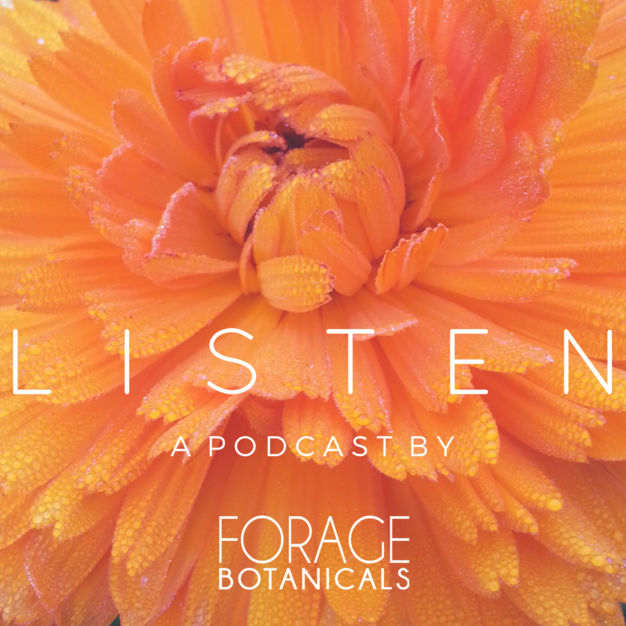 Listen with Forage Botanicals
Listen with Forage Botanicals
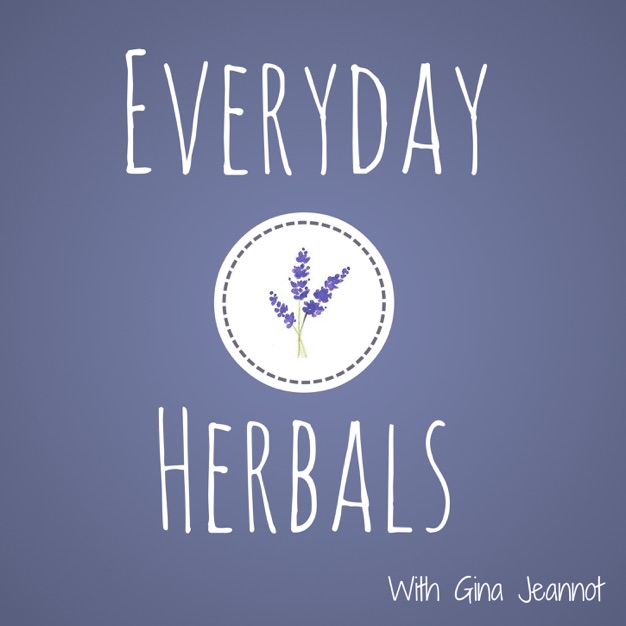 Everyday Herbals
Everyday Herbals
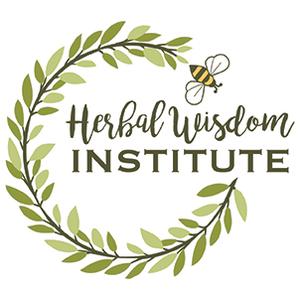 Herbal Wisdom
Herbal Wisdom
 HerbRally | Herbalism | Plant Medicine | Botany | Wildcrafting
HerbRally | Herbalism | Plant Medicine | Botany | Wildcrafting
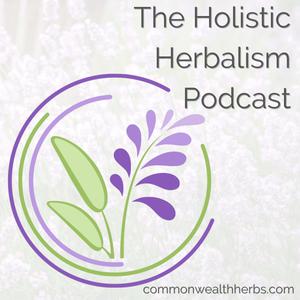 The Holistic Herbalism Podcast
The Holistic Herbalism Podcast
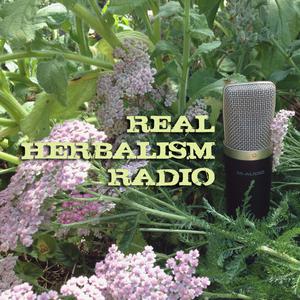 Real Herbalism Radio | Herbalism | Plant Medicine | Botany | Wild Crafting
Real Herbalism Radio | Herbalism | Plant Medicine | Botany | Wild Crafting